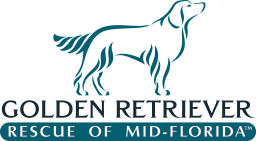Hemangiosarcoma, a common form of cancer arising from the lining of blood vessels, mainly affects older, large breed dogs, with Golden Retrievers being one of the more vulnerable. Of the three basic forms of hemangiosarcoma: dermal (skin), hypodermal (under the skin) and visceral (splenic or cardiac), visceral is the most common and the most deadly.
A disproportionate number of Goldens suffer from hemangiosarcoma of the spleen, and because this highly malignant cancer develops slowly and without symptoms in its early stages, by the time Goldens are symptomatic, they are usually in an advanced stage of the disease. Unknown to either pets or pet owners, small ruptures in the tumors can develop, allowing blood to escape into the abdomen, chest or the sac around the heart. This blood loss causes some dogs to show intermittent symptoms uncluding: lethargy and weakness; decrease in appetite; mild anemia, and if tested, a slight elevation of liver enzymes. Signs of a life-threatening internal hemorrhage may include: weakness; pale colour to the tongue; panting; rapid heart rate and a weak pulse; distended, fluid-filled abdomen and finally, collapse.
Sadly, there has been no significant advancement in the treatment of splenic hemangiosarcoma in decades, and the standard treatments only moderately extend the affected Golden’s life. Removing a healthy spleen to prevent the development of the disease is unlikely to provide any benefits, because this type of cancer cell originates in the bone marrow, and it will simply find another organ to invade. And although dogs can function without a spleen, removing it will have other, negative impacts on their health.
Once the disease is diagnosed, the standard treatment is surgery to remove the infected spleen, followed by aggressive chemotherapy — providing the cancer has not spread. The average survival time for dogs undergoing surgery alone: 1 to 3 months. The average survival time for dogs both undergoing surgery and receiving chemotherapy: 8 to 9 months. Chemotherapy slows the growth of new tumors and, despite the silent progression of the disease, affords the Golden a high quality of life during those added months.
Some veterinary experts find that one of the most important tools in the early detection of splenic hemangiosarcoma is an ultrasound, because of how easily the spleen can be seen. They recommend starting regular ultrasounds on Goldens at 5 years of age, with testing repeated at least once a year. However, ultrasound equipment is expensive and not all veterinary offices offer the procedure, and for those that do, the cost to Goldens’ owners can be significant.
Other tools in the preventative arsenal are vet checks on older Goldens every six months for careful palpation of their abdomen to check for any abnormalities or changes. Complete blood counts should also be done every 6 months, because mild anemia often points to a more serious underlying issue that may require further exploration.
In their search for ways to make their beloved Goldens as comfortable as possible, many owners will add alternative treatments to conventional ones. But they must first find an experienced holistic veterinarian or a western vet who is open to alternative medicine. Along with various high potency vitamins, supplements and natural herbs prescribed in the appropriate amounts, a specific cancer diet is recommended, as are ongoing sessions of acupuncture.
Although nothing can alter the inevitable outcome of this dread disease, if Goldens can enjoy the time left to them with a minimum of discomfort, that is what matters most – for them and for the people who love them.
Article by Nomi Berger
